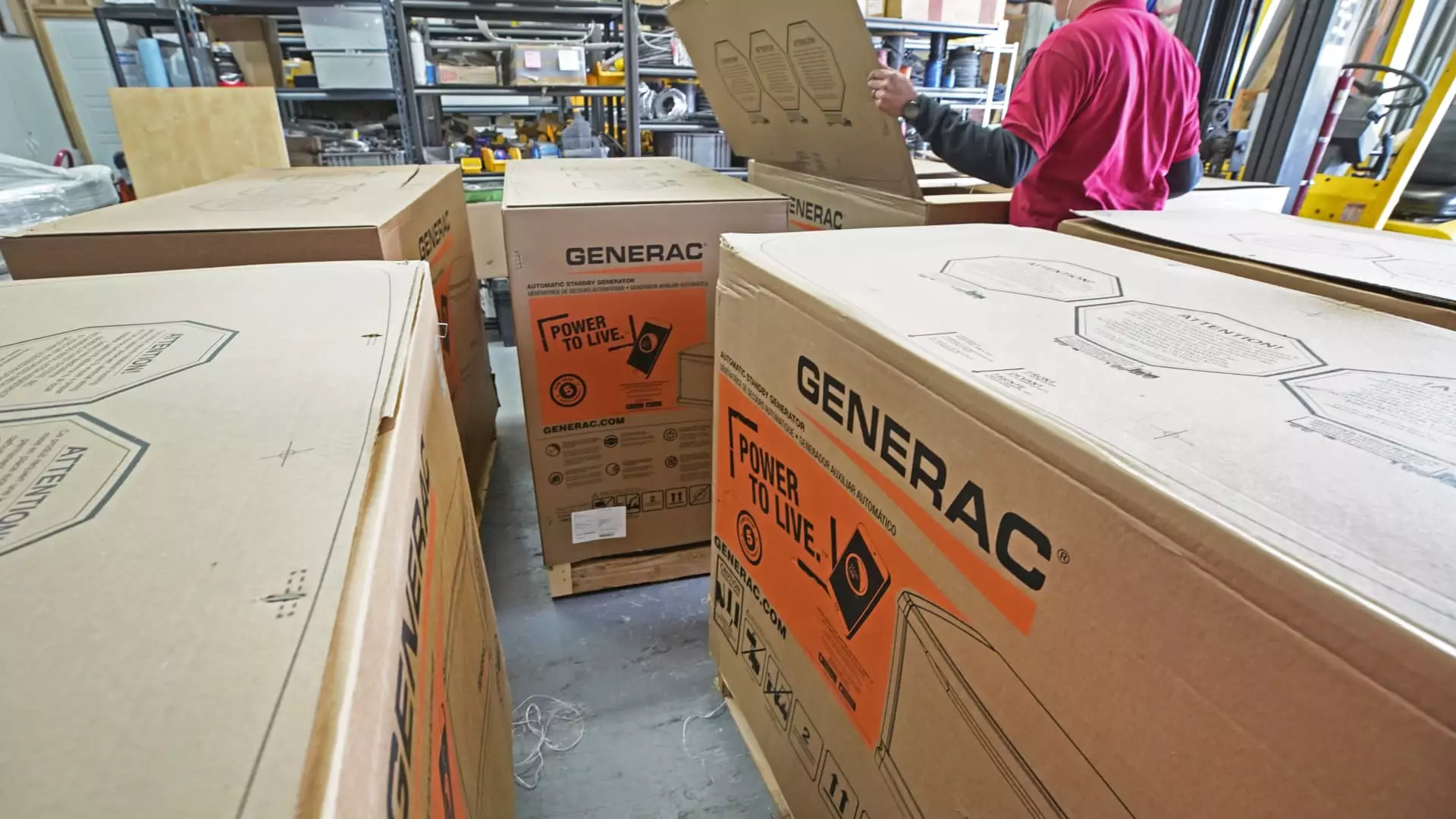As America experiences an alarming increase in temperature extremes, investment patterns are taking an intriguing turn. Generac, a leader in backup generators, has seen its stock surge — an impressive 12% increase this week alone. This is both a symbol of the company’s resilience and a reflection of the underlying anxiety regarding our aging power infrastructure. When extreme weather events, like the current heatwave affecting regions from New York to the Ohio Valley, create widespread power outages, companies like Generac become pivotal players in the recovery narrative.
The alarming fact is that around 130 million Americans are currently under extreme heat warnings. This reality engenders a societal shift. As the climate crisis deepens, the demand for alternative power sources and backup systems becomes less of a luxury and more of a necessity. Investors understand this shift — they can smell the opportunity from a mile away. The historical context adds weight. Generac is climbing toward its sixth consecutive day of gains, drawing the attention of investors who might otherwise overlook the stock in more stable times.
Hurricane Season: Not Just Another Seasonal Worry
As if heatwaves weren’t enough, we are on the brink of a potentially brutal hurricane season. The National Oceanic and Atmospheric Administration predicts between thirteen to nineteen named storms, with a significant number likely escalating into hurricanes. This underscores a vital point: climate change is not a distant concern; it is actively reshaping our weather patterns and, subsequently, our investment landscapes. The looming threat that hurricanes could increase power outage risks by fifty percent carries dire implications.
Generac CEO Aaron Jagdfeld has pointed out that the severe weather combined with the burgeoning demand from tech-heavy data centers will continue to place an immense strain on our power grid. It’s a brutal truth: America’s infrastructure is crumbling, and companies like Generac might be our best hope in an increasingly harsh climate reality. The CEO’s remarks on “Mad Money” reveal an acknowledgment of the crisis: “This is only going to get worse.” It’s a sentiment that reverberates not only in the executive suites but also resonates with the equity market.
Investing Trends: A Reflective Shift in Utility Stocks
As the demand for electricity grows at a projected compound annual growth rate of 2.5% from 2024 to 2035, utility stocks are gaining traction on Wall Street. This sector appears poised to benefit from the perfect storm of demand induced by both extreme heat and increased reliance on digital infrastructure. According to Bank of America, the second half of the year anticipates “significant” tailwinds for power utilities, marking an opportunistic moment for investors.
However, selective investment remains crucial. It would be naive to think all utility companies will weather this storm adeptly. There will undoubtedly be laggards, while others like Sempra and Northwestern Energy promise catalysts for improved performance. It’s a chaotic chess game, and the players who can discern the strengths and weaknesses will come out ahead. With an emphasis on choice utility investments, some firms stand to gain not just from demand but from their ability to adapt efficiently to the shifting climate scenarios ahead.
Lessons from the Market: Contemplating Responsible Investing
In the throes of climate change, it’s essential to reflect on what responsible investing means in this context. Stakeholders must navigate the fine line between opportunism and ethics. Blatantly capitalizing on disasters feels morally ambiguous, yet the pressing need for renewable energy and backup systems can catalyze systemic change. This intricate balance between risk management and social responsibility poses challenging questions for today’s investors.
When contemplating Generac as a potential investment, it’s essential to ask: Is this merely a response to an immediate market need, or is it indicative of a structural change in how we perceive energy consumption and infrastructure investment? The answer likely points to both. The extraordinary challenges posed by climate change are not fleeting; they represent a profound paradigm shift. If investors embrace this reality, they may find that their portfolios can align with a future that demands more robust, resilient energy solutions.
In the end, the consequences of our current climatic trajectory could dictate not only the fates of businesses like Generac but also the broader health of America’s energy infrastructure.

